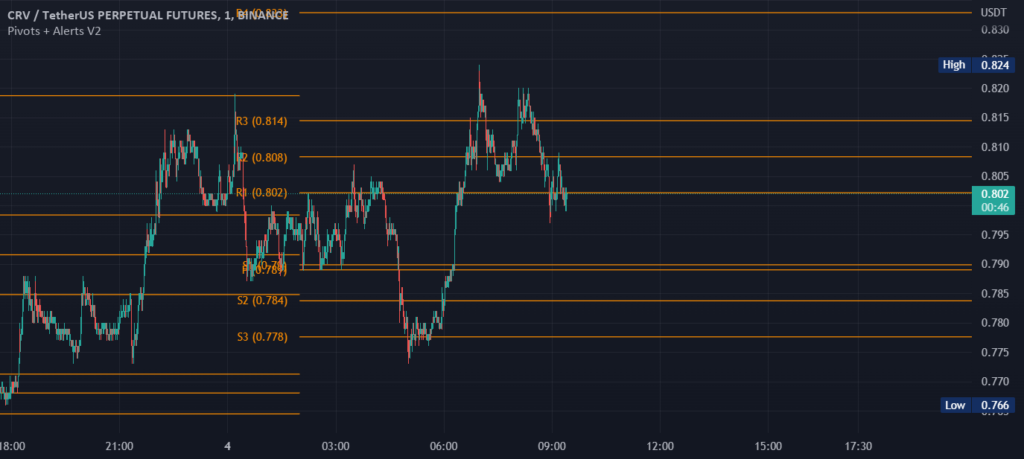This content is for informational and entertainment purposes only, not financial advice. The authors are not professional traders. Trading involves risk and is not suitable for all investors. Decisions should be made with consideration from a financial advisor. This article may contain affiliate links. For full details, see our Affiliate Disclosure and Full Disclaimer.
Table of Contents
I. Introduction
Pivot points are a pivotal tool in the arsenal of traders, offering a mathematical approach to discerning critical support and resistance levels in financial markets. These points are calculated using previous trading session data, providing insights that are especially relevant for the current trading day. This makes them an indispensable tool for short-term trading strategies, particularly for day traders.
Their application extends significantly to options trading, catering to both day and swing traders. By providing key levels for market entry, exit, and stop-loss placements, pivot points assist traders in making informed decisions. This is crucial in options trading, where understanding market sentiment and potential price movements can substantially impact trading outcomes. For novice and experienced traders alike, mastering pivot points can lead to more strategic and successful trading endeavors.
II. Understanding Pivot Points

a. What Are Pivot Points?
Pivot points are technical analysis indicators used to determine the overall trend of the market over different time frames. They are calculated using the high, low, and close prices from the previous trading day. Pivot points identify potential support and resistance levels, serving as a predictive indicator rather than a lagging indicator.
b. Types of Pivot Points
There are several types of pivot points, each with its unique calculation method. These include Standard (Classical) Pivot Points, Woodie’s Pivot Points, Camarilla Pivot Points, Fibonacci Pivot Points, and Demark Pivot Points, each providing different levels of support and resistance.
c. Calculating Pivot Points
The calculation of pivot points is based on the high, low, and close prices of the previous trading period. The standard formula for calculating the main pivot point (PP) is (High + Low + Close) / 3. From this central pivot, additional levels of support (S1, S2, S3) and resistance (R1, R2, R3) are derived, offering traders critical thresholds for making trading decisions.
III. Pivot Points in Trading Strategies

a. Market Sentiment Analysis
Pivot points are effective in gauging market sentiment. When prices are above the pivot point, the market sentiment is typically bullish, and when below, it’s bearish. This distinction helps traders understand the general mood of the market, guiding their trading decisions accordingly.
b. Trend Following and Breakouts
Pivot points are instrumental in identifying potential breakout points in the market. Traders can use these points to spot the start of a trend or a sudden shift in market direction, enabling them to enter trades at the most opportune moments.
c. Range Trading with Pivot Points
In range-bound markets, pivot points are used to identify potential turning points. Prices often oscillate between these pivot points, offering opportunities for traders to buy low and sell high within a defined range. This strategy is particularly useful in less volatile markets where prices move within predictable boundaries.
IV. Applying Pivot Points in Options Trading

a. Pivot Points and Options Strategies
Pivot points are a valuable tool in options trading, providing critical information for strategy formulation. Options traders use these points to determine optimal strike prices and expiry dates, aligning their trades with expected market movements. By identifying potential turning points, pivot points help in deciding whether to adopt a bullish or bearish options strategy.
b. Risk Management and Trade Optimization
In options trading, managing risk is paramount. Pivot points aid in setting strategic stop-loss levels and adjusting positions to optimize trades. They offer a structured approach to limit potential losses while maximizing gains.
c. Case Studies and Examples
Practical examples and case studies highlight how pivot points can be effectively utilized in various options trading scenarios. These real-world applications demonstrate the versatility of pivot points in different market conditions, helping traders understand their practical utility in options trading strategies.
V. Conclusion
In summary, pivot points are a fundamental tool in trading, offering valuable insights into market trends and potential price movements. They are particularly beneficial in options trading, aiding in strategy development, risk management, and decision-making. We’ve explored their various types, calculation methods, and applications in different trading strategies, emphasizing their versatility. For traders keen on deepening their market analysis and refining their trading techniques, incorporating pivot points into their toolkit is a step towards more informed and successful trading. Continued exploration and application of these strategies can lead to enhanced trading acumen and market proficiency.

